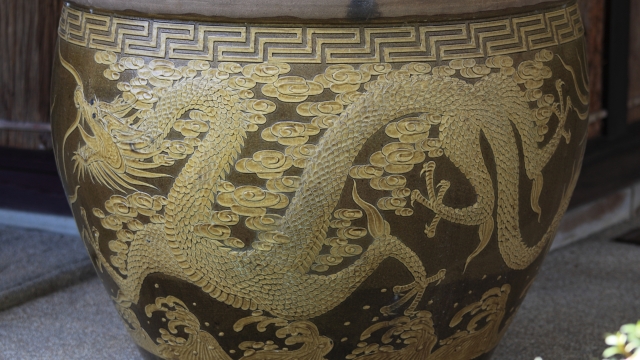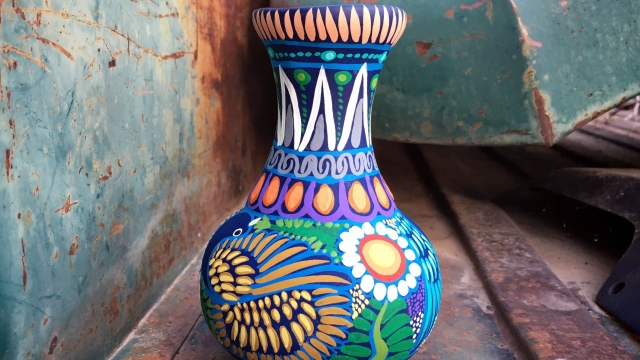
Pottery is more than just a means of crafting functional items; it is an ancient art form that embodies the creativity and spirit of diverse cultures. From the earliest clay vessels used for storage and cooking to today’s intricate works of art, pottery tells a story of human expression and innovation. Each piece carries the mark of its maker, reflecting personal style and the traditions of the craft.
In the realm of contemporary pottery, Amitābha Studio stands out for its dedication to creating unique, one-of-a-kind lamps that breathe new life into antique and vintage Delft and other Dutch and Belgian pottery. These lamps not only illuminate spaces but also serve as conversation starters, showcasing the rich heritage of pottery through their thoughtful design and craftsmanship. As we explore the depths of this beautiful art form, we will uncover the connection between the earth, the artist, and the emotions evoked by these stunning pieces.
The History of Delft Pottery
Delft pottery, known for its distinctive blue and white designs, has a rich and vibrant history that dates back to the 16th century in the Netherlands. Originating in the city of Delft, these ceramics were inspired by Chinese porcelain that had become immensely popular in Europe. As local potters sought to replicate the fine qualities of this exotic material, they developed a unique style that combined traditional techniques with local influences. By the 17th century, Delftware became a symbol of Dutch artistic achievement, celebrated for its beauty and craftsmanship.
The production of Delft pottery surged during the Dutch Golden Age, when the flourishing economy and trade allowed artisans to experiment with various forms and decorations. Artisans created not only tableware but also decorative pieces that showcased intricate designs, often depicting landscapes, historical events, or floral patterns. The industry thrived, with many workshops producing a variety of items that appealed to both local and international markets. This period marked the peak of Delft pottery, establishing it as a coveted craft across Europe.
As time progressed, Delft pottery faced challenges from industrialization and the introduction of mass production techniques. However, its unique allure has never waned, and contemporary artisans continue to draw inspiration from traditional methods. Today, studios like Amitābha Studio keep the spirit of Delft pottery alive by creating unique lamps and artifacts, merging antique charm with modern functionality. This enduring legacy illustrates how the art of pottery not only reflects historical craftsmanship but also adapts to contemporary tastes.
Craftsmanship at Amitābha Studio
At Amitābha Studio, the artistry of pottery transcends mere function, evolving into a form of expressive craftsmanship that brings life and warmth into any space. Each lamp is a testament to the meticulous attention given to every detail, showcasing the unique characteristics of the antique and vintage Delft pottery that serves as the foundation for these creations. The studio’s artisans take great pride in honoring the rich history embedded within each piece, ensuring that they breathe new life into the materials while preserving their heritage.
The process begins with a careful selection of pottery, often sourced from various corners of the Netherlands and Belgium. This careful curation allows Amitābha Studio to offer a diverse range of designs, each reflecting the intricate patterns and colors that define Dutch ceramics. The artisans then transform these pieces into stunning lamps, employing techniques that highlight and complement the original artistry of the pottery. By fusing functionality with aesthetic elegance, they create items that not only illuminate spaces but also spark conversations and admiration.
What sets Amitābha Studio apart is their commitment to creating one-of-a-kind pieces. Each lamp tells a story, weaving together elements of history and contemporary design. This dedication to uniqueness results in products that resonate with customers seeking more than just lighting solutions; they look for art that speaks to the soul. The craftsmanship at Amitābha Studio reflects an unwavering passion for pottery, ensuring that each lamp serves as a cherished addition to any home.
Design Inspirations and Techniques
The design inspirations behind the unique lamps at Amitābha Studio draw heavily from the rich history of Delft and other Dutch and Belgian pottery. Each piece takes cues from traditional motifs, including intricate floral patterns and whimsical scenes, which were prominent in the artistry of the past. These influences are reimagined in vibrant colors and contemporary shapes, allowing each lamp to resonate with both history and modern aesthetics. The blending of old-world charm with current design makes these lamps not only functional but also conversation starters.
Techniques employed in the creation of these lamps showcase a deep respect for craftsmanship. Artists at Amitābha Studio utilize a mix of handcrafting and meticulous attention to detail to breathe new life into antique pottery. The process often involves restoring found pieces, which requires a delicate touch and an eye for preservation. By carefully mending cracks and chips, each lamp tells its own story, enhancing its character and appeal. This dedication to traditional techniques ensures that the essence of the original pottery is maintained while also transforming it into a new artistic form.
In addition to restoration, the studio also embraces innovative lighting techniques that elevate the pottery’s beauty. By strategically placing lighting elements within the designs, the interplay of light and shadow creates an enchanting atmosphere. The lamps not only illuminate spaces but also highlight the intricate details of the pottery, allowing the artistic elements to shine. This fusion of technique and inspiration results in a collection that is as much about the artistry of pottery as it is about modern design sensibilities.
Delft Blue
Sustainable Practices in Pottery Making
Sustainable practices in pottery making are increasingly important as artisans seek to minimize their environmental impact. One key practice involves the careful selection of materials. Artists are turning to locally sourced clay and natural glazes, which not only reduces transportation emissions but also supports local economies. By prioritizing these materials, potters can create beautiful works that reflect the unique character of their regions while promoting sustainability.
Another significant aspect of sustainable pottery is the use of energy-efficient kilns. Traditional kilns can consume large amounts of energy, contributing to a higher carbon footprint. Innovative potters are now adopting kiln designs that utilize alternative fuels or renewable energy sources. This shift not only decreases energy consumption but also allows for greater experimentation with firing techniques, resulting in high-quality pieces that resonate with environmentally conscious consumers.
Finally, promoting the longevity and functionality of pottery is essential for sustainability. By creating durable, timeless pieces like the unique lamps from Amitābha Studio, artisans encourage consumers to invest in items that are built to last. This commitment to quality reduces the need for frequent replacements and fosters a deeper appreciation for handmade craftsmanship, ultimately encouraging a culture that values sustainability in both art and daily life.
The Soul of Handmade Art
The essence of handmade pottery transcends mere functionality; it embodies the soul of the artist and the rich history of the materials used. Each piece tells a story – whether it showcases intricate designs from centuries past or the artist’s personal touch. In the case of Amitābha Studio, unique lamps crafted from antique and vintage Delft and other Dutch and Belgian pottery are a vivid testament to this narrative. These artifacts not only illuminate spaces but also provide a glimpse into the craftsmanship and cultural heritage of their origins.
The tactile quality of clay and the careful attention to detail in handmade pottery draw people in, creating a connection between the object and its owner. When one chooses a piece from Amitābha Studio, they are not just selecting a lamp; they are investing in a connection to history and artistry. This philosophy is particularly evident in how each lamp combines traditional techniques with modern design sensibilities, resulting in a harmonious blend that speaks to both legacy and innovation.
In a world increasingly dominated by mass production, the allure of handmade pottery lies in its rarity and individuality. It represents a commitment to craftsmanship and a respect for the past. Each lamp is a work of art that resonates on a personal level, inviting individuals to appreciate the time, effort, and creativity that go into its making. In this way, pottery becomes more than just an object; it is a piece of the artist’s soul, offered to enrich our lives and spaces.





